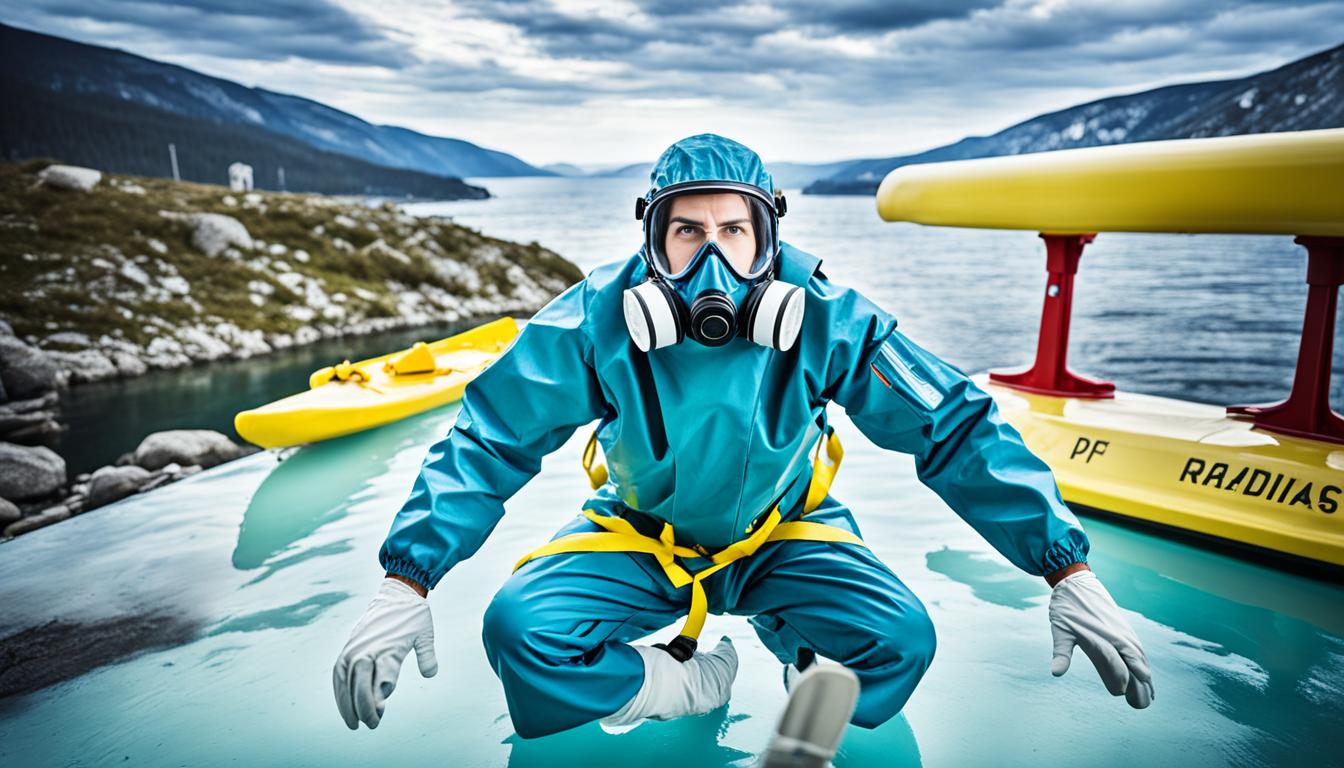Radiation sickness happens when the body meets too much ionizing radiation. Causes include nuclear accidents, exposure to radioactive materials, and some medical treatments.
Its symptoms are nausea, vomiting, and diarrhea. Also, people can feel tired, lose hair, and see their immune systems work less. How bad these symptoms are depends on how much radiation someone gets and for how long.
Too much ionizing radiation hurts cells and DNA, leading to radiation sickness. Doctors check your symptoms and if you had contact with radiation to diagnose it.
There is no cure for radiation sickness. But, treatments can help manage symptoms and stop more harm. Lately, stem cell therapies look promising in fixing damaged organs and tissues.
Key Takeaways:
- Radiation sickness happens with too much ionizing radiation.
- Its symptoms vary and include nausea, vomiting, and hair loss.
- Causes are from radioactive materials and nuclear accidents.
- Doctors diagnose based on symptoms and exposure to radiation.
- Stem cell therapy shows hope as a treatment for radiation sickness.
Symptoms of Radiation Sickness
The signs of radiation sickness change based on how much radiation a person gets. Mild cases might show up as nausea, vomiting, diarrhea, and feeling fatigued. In worse situations, you might see hair loss, skin burns, internal bleeding, and harm in the gastrointestinal tract. People with radiation sickness are also more prone to getting sick from other things.
Much like the symptoms, the time it takes to feel sick can change from person to person. Some folks might not feel any different right away. Sometimes, it takes days for the symptoms to start. How bad the symptoms are and how long they last depends on the radiation amount and type.
If you think you were near a lot of radiation or now feel these signs, you should see a doctor quickly. A health expert can check you out, measure how much radiation you got, and advise the best treatment. Seeking help fast is key to managing radiation sickness.
Causes and Prevention of Radiation Sickness
Radiation sickness comes from getting near ionizing radiation sources. This can happen in nuclear accidents, cancer treatment with radiation, or through work. It’s also possible when you handle radioactive items.
The damage from radiation sickness depends on how much and how long you were exposed. More radiation and time mean a bigger chance of getting sick.
Stopping radiation sickness is all about taking the right steps. It’s vital to wear protective gear. This blocks harmful radiation. Being careful with materials that stop radiation is key too. If you work with these materials, always keep track of radiation levels.
Teaching people about radiation’s dangers is crucial. Everyone should know how to stay safe from radiation. This includes learning about the risks and knowing what actions to take. With this knowledge, we can all work to avoid getting sick from radiation.
Preventive Measures
- Follow radiation safety protocols in high-risk environments
- Ensure proper use of protective clothing and equipment
- Use shielding materials to reduce radiation exposure
- Implement effective radiation monitoring and control measures
- Provide adequate training and education on radiation safety
These steps and promoting a safe culture really cut down on the dangers of radiation sickness. Always put safety first in situations where radiation could be a risk.
Stem Cell Therapy for Radiation Sickness
Stem cell therapy brings hope to fight radiation sickness. This sickness comes from being near powerful radiation. This new way aims to heal tissues harmed by radiation. Studies show that certain stem cells can help people survive and heal from radiation sickness.
Stem cells are amazing because they can turn into different cell types. By doing this, they help grow new tissue. But we still need more research to understand everything and make sure it’s safe and effective.
The more we learn about stem cells, the more we see their potential in treating radiation sickness. This might change the game in helping those exposed to radiation. It could bring new chances for those dealing with the harmful effects of radiation sickness.

